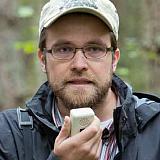
A new decision support tool for wildlife management to assess moose browsing damages
On this page
Moose is the most important game species in Finland, but also the most significant damage agent in seedling stands. The risk for browsing damage is one aspect taken into account when defining regional goals for the moose population levels and quotas for hunting. Natural Resources Institute Finland (Luke) developed a new tool that offers more accurate information on the effects of moose population size on the local browsing damage risks.
Towards more solid knowledge base for decision making
According to National Forest Inventory (NFI), moose browsing damages are observed on ca. 500 00 hectares of seedling stands, making moose the main damage agent for seedlings (figure 1). The species has also been the most significant game species for Finland for a long time.
The decisions regarding regional moose hunting and desired population levels are made at so called game management areas (GMA). The efficient decision making has, however, suffered from lack of spatially solid data on the regional browsing damage and their relationship with the regional moose population.
In the past this gap was addressed by looking at the level of compensated damage, but this approach has many biases. The data comes with a delay, making it invalid for up-to-date decision making and also the level of compensations does not match the actual level of damage as only a minority of all damages are compensated.


Researchers at Luke developed an NFI-based tool that predicts the amount of browsing damage in a given GMA with a given moose population level. The tool also acknowledges the local forest structure within the given GMA to thoroughly assess the effect that a moose population of a given size is expected to have on the seedling stands.
”Public discussion around moose is mainly around the question of what is a suitable population level. Here, the role of a research institute is to bring forward transparent, research-based information to support the decision makers,” senior scientist Juho Matala summarizes.
Information at a local level and in an easily digestible format
The R&D project, funded by the Ministry of Agriculture and Forestry, continued from and went beyond of what past projects on the topic had achieved. Pre-exisiting models on moose browsing damage were based on predicting the level of damage with the level of moose population. The new method and the new tool took account the local forest structure.
In the end, the most significant predictors of the local moose browsing damage turned out to be not only the moose population level, but also the amount of pine-dominated and deciduous-dominated seedlings stands available for the moose population as well as the share of mature forests and forest cover in general.
The raw data upon which the tool and the models were built came from the NFI and the official population estimates of moose, i.e., the best available objective information. In addition, the models are GMA spesific, allowing the information to be used for regional deer decision making.
”This was the ultimate aim of the work: to create a tool that can be utilized at the local level to assess the levels of browsing damage in relation to different levels of moose population – with acknowledging the local forest structure as well,” senior scientist Ari Nikula states.
The tool is freely available online at Luonnonvaratieto.fi -portal. The tool produces a graphic illustration depicting how the amount of browsing damages develops in relation to a varying population level of moose. The user can alter the moose population and the results are automatically visualized. In addition, the tool produces an estimate on how the browsing damage are divided by tree species (pine, birch, spruce) and how large proportions of the local seedling stands would be damaged with the given population level.
More information
Literature
Nikula, A. ym. 2021. Modelling the effect of moose Alces alces population density and regional forest structure on the amount of damage in forest seedling stands. Pest Management Science 77: 620-627. https://doi.org/10.1002/ps.6081
Matala, J. ym. 2021. Hirvieläinten vaikutuksia yhteiskuntaan, elinkeinoihin ja ekosysteemiin. Luonnonvara- ja biotalouden tutkimus 38/2021. Luonnonvarakeskus. Helsinki. 142 s. http://urn.fi/URN:ISBN:978-952-380-217-9

